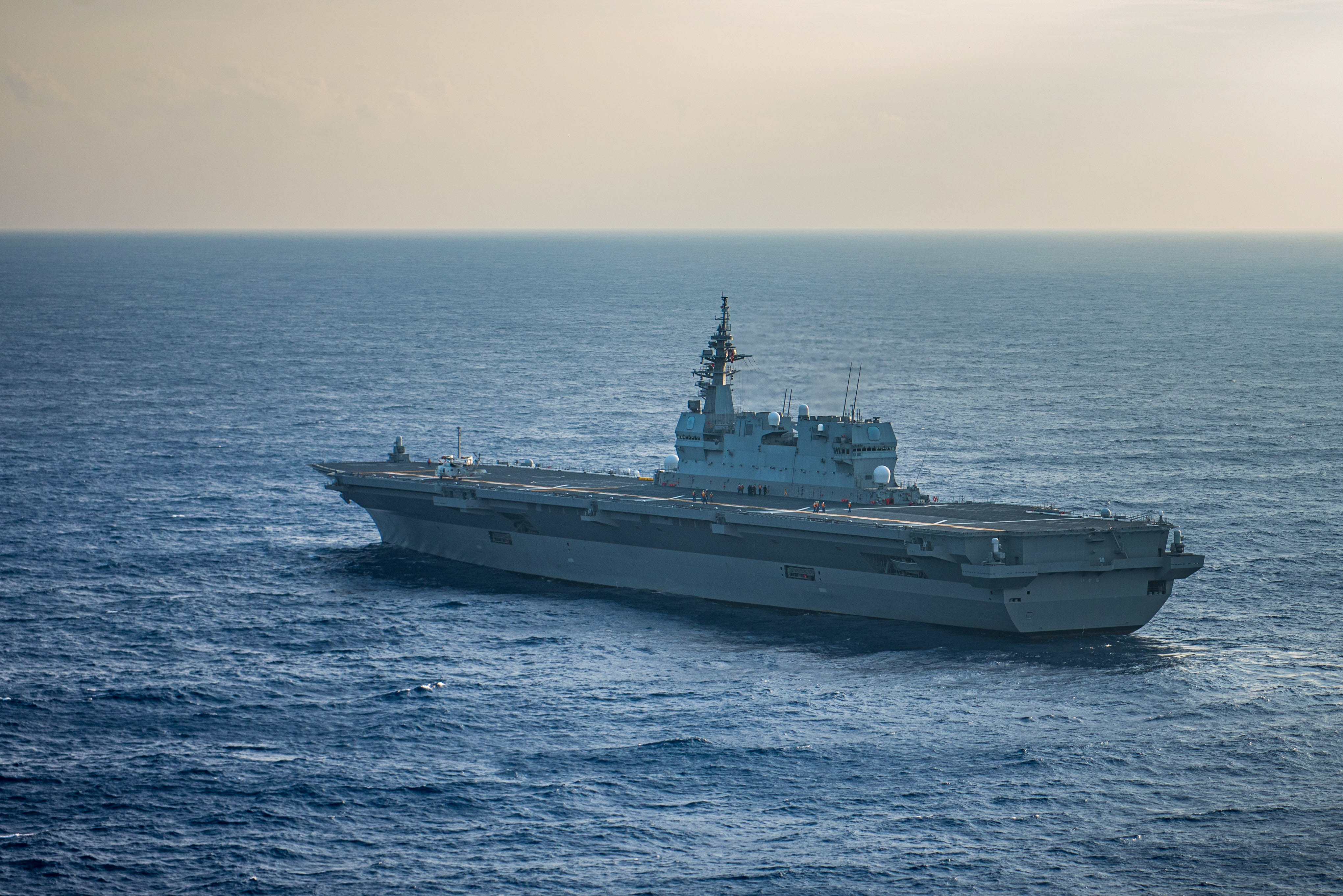
Japan’s Ministry of Defense requested on Thursday a record defense budget of $53 billion for Fiscal Year 2024, an increase over FY2023’s budget of $46.8 billion. The increased request reflects the Kishida administration’s intention to boost defense spending and capabilities over the next five years, though the final decision will be made by the Finance Ministry in December.
Among the programs and acquisitions to be funded are construction of two Aegis-equipped destroyers, joint development with the United States of the Glide Phase Interceptor (GPI), acquisition of precision-guided missiles, construction of a new class of frigates, acquisition of F-35A and F-35B Lightning II Joint Strike Fighters, construction of a fleet oiler and acquisition of ships to improve troop and equipment transportation in response to situations around Japan’s southwest islands.
The MoD requested $2.6 billion for the construction of two Aegis destroyers with planned deliveries in 2027 and 2028. Along with the Aegis system and SM-6 missiles, the ships also will incorporate an improved version of the Type 12 surface-to-surface missile (SSM) and with space to incorporate future capabilities such as anti-hypersonic glide vehicle interceptor missiles. The two Aegis-equipped ships are expected to be deployed only around Japanese waters in a ballistic missiles defense mission, freeing up two of the current eight Japanese Maritime Self Defense Force (JMSDF) Aegis destroyers to serve as carrier strike group escorts once the two Izumo-class carriers complete their conversion to and start operating F-35B Lightning II fighters.
On August 15, the United States and Japan announced an agreement to jointly develop the GIP, and the MOD $515 million requested for this project. The budget request also included procurement of overseas standoff weapons such as the Joint Strike Missile (JSM) for its F-35s and Joint Air-to-Surface Standoff Missile for its F-15s.
The first two of a new class of 4,500-ton frigates are to be built under a $1.19 billion request. Japan originally planned to build up to 22 Mogami-class frigates to replace its older destroyers and destroyer escorts, but has now capped the Mogami class to 12 ships with a new class of 12 frigates to be built starting in 2024. The new frigates will have long-range missiles and enhanced antisubmarine warfare and maritime operations capabilities, according to the budget request document. Funding for a new fleet oiler costing $568 million was requested along with the eighth Taigei-class submarine at $650 million. Other JMSDF budget requests include a sixth Awaji-class minesweeper, three improved P-1 Maritime Patrol Aircraft (MPA) and 6 SH-60L antisubmarine warfare helicopters.
JMSDF requested $737 million for eight F-35As and $860 million for seven F-35Bs for the Japan Air Self-Defense Force along with funding to upgrade the F-15 fleet and eight F-2 fighters with improved data networking and anti-ship missile capabilities.

Japan plans to establish a new unit to transport troops in its southwest islands with the unit tentatively called the Self-Defense Force Maritime Transport Group with a budget request of $118 million for three landing craft–type boats. Defense of its southwestern islands has become an increased priority for Japan because of China’s claims on the disputed Senkaku islands and increased People’s Liberation Army Navy activities around the international waters there, including regular PLAN carrier deployments. MoD also requested $143 million to develop unmanned amphibious vehicles capable of conducting supply missions to troops on islands.
Meanwhile, Russian surveillance ship Kurily (208) has been sailing along the southeast coast of the main island of Honshu. According to a Joint Staff Office (JSO) release on Wednesday, from August 25–26 the Russian ship was in the vicinity of Mikura Island—124 miles south of Tokyo—and Hachijo Island. On Sunday, the ship was sailing southwest in an area 50 miles east of Tanegashima Island—just 26 miles south of the main island of Kyushu. From Sunday to Monday, the Russian ship was in the vicinity of Tanegashima before sailing northeast, and on Wednesday it was between Mikura Island and Hachijo Island. Multipurpose support ships JS Enshu (AMS-4305) and JS Genkai (AMS-4304) and JMSDF P-1 MPAs of Fleet Air Wing 4 based at Naval Air Facility Atsugi shadowed the Russian ship.
A JSO release on Thursday stated that a Chinese Dongdiao-class surveillance ship with the hull number 799 was sighted at 3 a.m. on Thursday sailing northeast—68 miles west of Tsushima— and subsequently transited northeast through the Tsushima Strait to enter the Sea of Japan. Fast attack craft JS Otaka (PG-826) and JMSDF P-1 MPAs of Fleet Air Wing 1 based at JMSDF Kanoya Air Base on the main island of Kyushu and Fleet Air Wing 4 monitored the PLAN ship.





